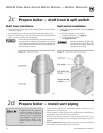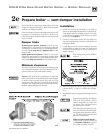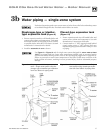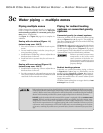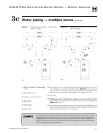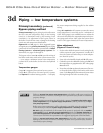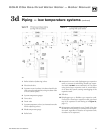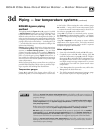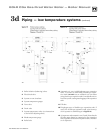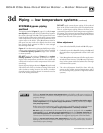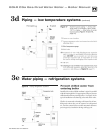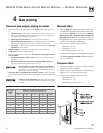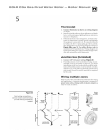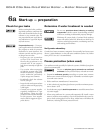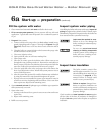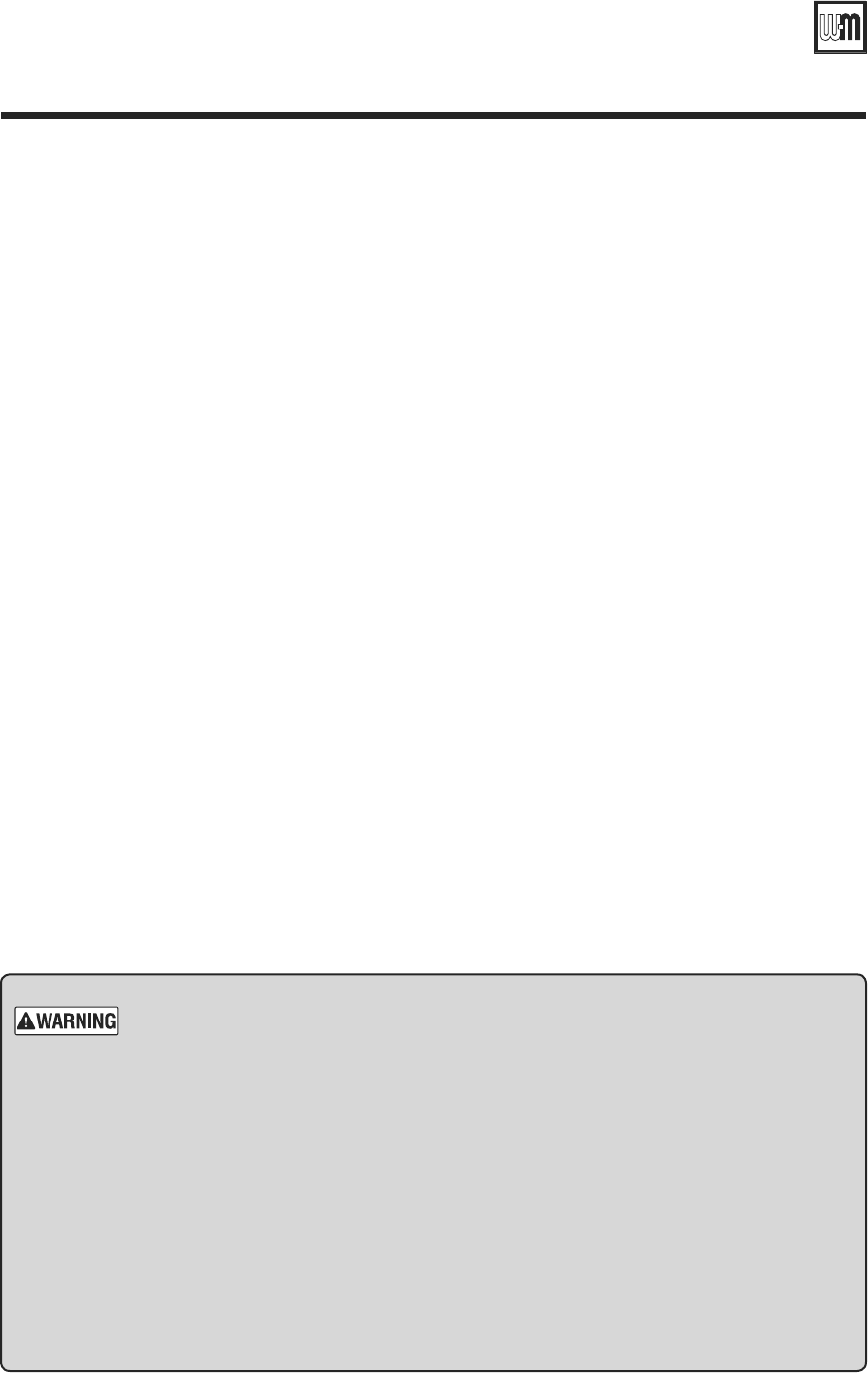
GOLD CGa Gas-Fired Water Boiler — Boiler Manual
22
Part Number 550-101-009/0107
Failure to PREVENTLOWRETURNWATERTEMPERATURE to the boiler could cause corrosion of
the boiler sections or burners, resulting in severe personal injury, death or substantial
property damage.
Radiant heating system piping should include a means of
REGULATINGTHEBOILERRETURN
WATERTEMPERATURE
and the SYSTEMSUPPLYTEMPERATURE (such as provided by an INJEC
TIONPUMPINGCONTROL
).
"OILERRETURNWATERTEMPERATUREWILLBEADEQUATELYCONTROLLEDUSINGTHEMETHODSSHOWN
in this manual provided the SYSTEMSUPPLYTEMPERATURE is RELATIVELYCONSTANT
DO NOT apply the methods of this manual if the system is equipped with an OUTDOOR
RESETCONTROL
Instead, PROVIDECONTROLSANDPIPING which can REGULATETHEBOILERRE
TURNWATERTEMPERATURE
at NOLESSTHAN& regardless of system supply temperature.
#ONTACTYOUR7EIL-C,AINREPRESENTATIVEFORSUGGESTEDPIPINGANDCONTROLMETHODS
Failure to
PREVENTCOLDRETURNWATERTEMPERATURE to the boiler could cause corrosion
damage to the sections or burners, resulting in possible severe personal injury, death or
substantial property damage.
BOILER-bypass piping
method
This piping method (&IGURE or , page 23) is called
a
BOILERBYPASS because part of the circulator flow is
bypassed around the boiler (through valve A). This
method reduces the flow rate throughout the boiler, in
order to raise the average water temperature in the boiler
ENOUGHTOPREVENTmUEGASCONDENSATION"OILERBYPASS
PIPINGISEFFECTIVEFORSOMEBOILERSINCLUDINGTHE#'A
— provided the flow rates are adjusted according to the
instructions following.
&IGURES and are alternative piping suggestions
for
CONVERTEDGRAVITY (large water content or steam
systems) or RADIANTHEATINGSYSTEM — for use when
primary/secondary piping can’t be applied. (&IGURE,
page 25, is another alternative, using system bypass in
place of boiler-bypass piping. &IGURE however, is
not suitable for radiant heating applications because it
does not protect the radiant system from possible high
water temperature.)
"OILERBYPASSPIPINGKEEPSSYSTEMmOWRATEASHIGHAS
possible and temperature drop as low as possible, help-
ing to equalize the building heat distribution.
Temperature gauges
'AUGEA is optional if the bypass valves will be ad-
justed using cold (or room temperature) return water
to the boiler. (When setting the valves without gauge
A installed — using cold or room temperature water
— assume the return water temperature to be 60°F. Set
the valves so gauge
reads at least 120°F.
'AUGE
B is optional on converted gravity systems,
but REQUIRED on radiant heating systems — to display
the water temperature being supplied to the radiant
tubing.
'AUGE
is REQUIREDon all systems to assure reliable
adjustment of the bypass valves. The boiler-mounted
temperature/pressure gauge can be used if a separate
temperature gauge is not installed.
Valve adjustment
1. Start with valve A fully closed and B fully open.
'RADUALLYOPENVALVE
A while closing valve B
until the temperature at gauge reads 60 °F higher
than gauge
A. A minimum 60°F temperature rise
through the boiler assures a low enough flow rate
and high enough average temperature to prevent
condensation even with low system return water
temperature.
6ALVE
A regulates the system flow rate, while valve
Bregulates the boiler flow rate.
4. The boiler-mounted temperature/pressure gauge
may be used in place of a separate gauge
.
Piping — low temperature systems (continued)3d



